APP Derm Fundamentals
The Foundational Level
This level focuses on basic dermatology knowledge, essential skills, and techniques needed for APPs who are new to dermatology or those looking to solidify their understanding of core concepts. The training is designed to simplify complex dermatology topics for immediate clinical application.
Key Features:
- 2300+ Clinical Images
- 100 Question Pre and Post Test
- 50 Question Midterm
- 12 Video Modules and Quizzes
- 17.5 hours of expert-led virtual training
- Module Exams to verify mastery
- Covers diagnostic skills, Dermwise Power Categories & simplifying dermatology concepts
AMA and AAPA Earn 26 hours of Continuing Medical Education (CME)
AANP Earn 26 contact hour(s) (which includes 5.0 hour(s) of pharmacology)

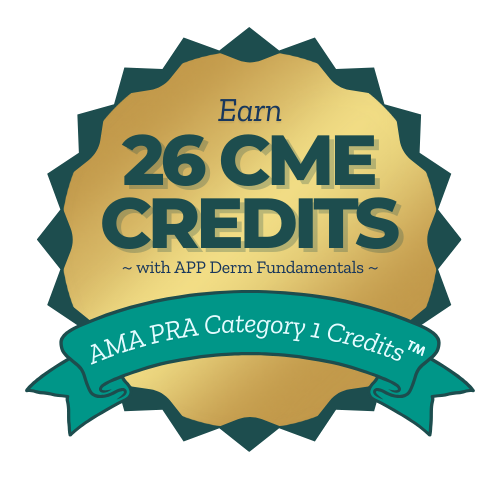
About the APP Derm Fundamentals Program
Results
Course Content
CME Overview
Activity Overview
This activity will help educate advanced practice and non-dermatology providers on accurately diagnosing dermatologic conditions.
Target Audience
This activity is designed for an audience of physicians, physician assistants and nurse practitioners.
Learning Objectives
Upon completion of the educational activity, participants should be able to:
- Learn the three layers of the skin and basic components of each
- Identify the major cell types and ultrastructural components of the skin
- Understand the skin renewal process involving the epidermis and stem cells
- Appreciate the function of the predominant cell types in the epidermis and dermis
- Recognize clinical correlations associated with the basic science of the skin
- Learn examination finding descriptors for dermatologic conditions
- Identify primary and secondary lesions found on the skin
- Grasp the definition of each primary and secondary lesion
- Appreciate secondary features including scale which help lead to accurate diagnosis
- Improve dermatologic communication skills through proper terminology usage
- Learn a rapid organization and retrieval system used by experts in dermatology
- Segment examination findings into defined categories
- Distinguish papulosquamous lesions and appreciate the importance of scale
- Review dermatologic conditions with papulosquamous findings
- Discern primary lesions and formulate differentials based on these
- Define and enhance knowledge of pruritus
- Better understand pruritus and its relation to dermatologic conditions
- Employ categorization techniques to methodically approach pruritus
- Identify inflammatory conditions which cause pruritus
- Construct differential diagnosis for infectious causes of pruritus
- Learn the minor and major diagnostic criteria for atopic dermatitis
- Identify stigmata of atopic dermatitis
- Relate the role of genetics and immunologic factors in the pathophysiology of the disease
- Enhance management through understanding treatment options
- Expand knowledge of eczematous dermatosis
- Learn key identifying features to help diagnose urticaria
- Differentiate acute from chronic urticaria
- Evaluate and expand knowledge in the differential diagnosis for urticarial lesions
- Identify best treatment practices for urticaria
- Expand knowledge of erythema multiforme, angioedema and pyoderma gangrenosum
- Grasp the common clinical presentations of seborrheic dermatitis
- Learn the lesion type and distribution for psoriasis and seborrheic dermatitis
- Expand knowledge of therapy options for psoriasis
- Identify nail changes and subtypes of psoriasis including guttate psoriasis
- Predict symptoms and clinical descriptions of dyshidrotic eczema
- Identify the characteristic features of pityriasis rosea
- Understand the characteristic distribution and initial lesion presentation in pityriasis rosea
- Learn the key features of pityriasis alba, pityriasis lichenoides chronica, pityriasis lichenoides et varioliformes acuta
- Review therapeutic options for pityriasis alba and pityriasis rosea
- Identify features of confluent and reticulated papillomatosis including best treatment
- Identify key features needed to diagnose lichen planus
- Interpret nail and lesion findings including scale, Wickham’s striae and color to aid in diagnosis of lichen planus
- Learn the potential etiologic agents in lichen planus
- Formulate a differential diagnosis for papulosquamous lesions
- Identify and understand significance of lichen sclerosus et atrophicus
- Understand the pathophysiology of acne and dispel treatment misconceptions
- Identify acne lesion types and utilize this information to accurately manage therapeutic choices
- Differentiate acne from other cutaneous conditions in the differential diagnosis of acneiform lesions
- Recognize proper treatment utilizing knowledge of lesion subtype and medication mechanism of action
- Interpret examination findings and exacerbating factors to identify rosacea
- Accurately diagnose rosacea and common variants or mimicking conditions including granulomatous rosacea and perioral dermatitis
- Understand risk factors and pathogenesis for actinic keratosis
- Enhance knowledge for property therapeutic options in actinic keratosis
- Learn the differential diagnosis of actinic keratosis and the importance for patients
- Identify key examination findings to help diagnose basal cell carcinoma
- Construct proper treatment plan for basal cell or squamous cell carcinoma
- Assess the key features to diagnose seborrheic keratosis properly
- Formulate a differential diagnosis based on features identified in seborrheic keratosis
- Expand knowledge on epidermal growths and their importance in dermatology
- Identify key features in sebaceous tumors which help formulate a differential
- Understand the clinical presentations of cysts including milia, pilar and epidermal cysts
Criteria for Success
To obtain a certificate of completion, a score of 70% or better on the post-test is required. Please proceed with the activity until you have successfully completed this program, answered all test questions, completed the post-test and evaluation, and have received a digital copy of your certificate. You must participate in the entire activity to receive credit. If you have questions about this activity, please contact AKH Inc. at Ketrea@akhcme.com.
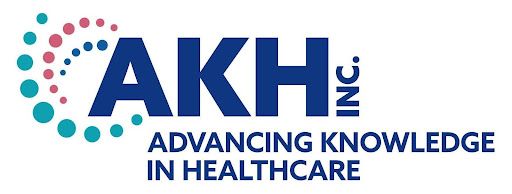
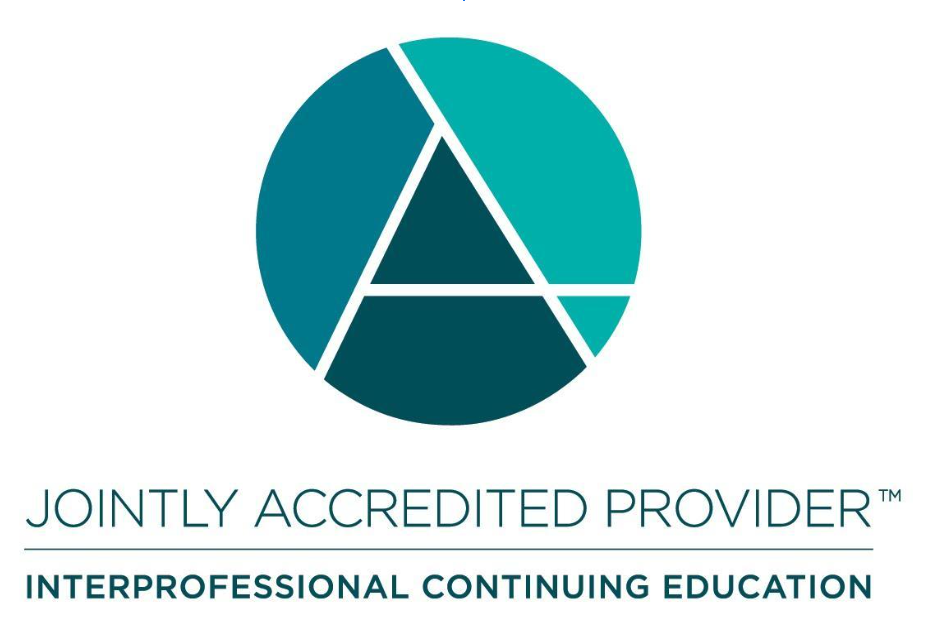
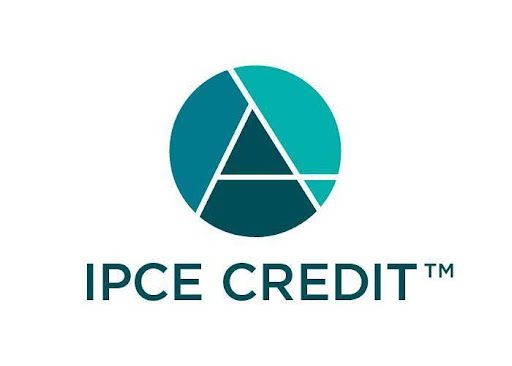
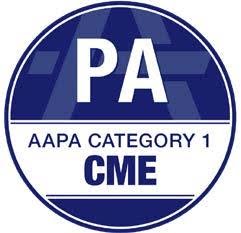

Disclosures
Commercial Support
There is no commercial support for this activity.
Relationships

Disclosure of Unlabeled
Use and Investigational Product. This educational activity may include discussion of uses of agents that are investigational and/or unapproved by the FDA. Please refer to the official prescribing information for each product for discussion of approved indications, contraindications, and warnings.
Disclaimer
This course is designed solely to provide the healthcare professional with information to assist in his/her practice and professional development and is not to be considered a diagnostic tool to replace professional advice or treatment. The course serves as a general guide to the healthcare professional, and therefore, cannot be considered as giving legal, nursing, medical, or other professional advice in specific cases. AKH Inc. specifically disclaim responsibility for any adverse consequences resulting directly or indirectly from information in the course, for undetected error, or through participant’s misunderstanding of the content.
If you would like to opt out from future communications from AKH please send an email to optout@akhcme.com with your information with "Opt Out" in the subject line.
